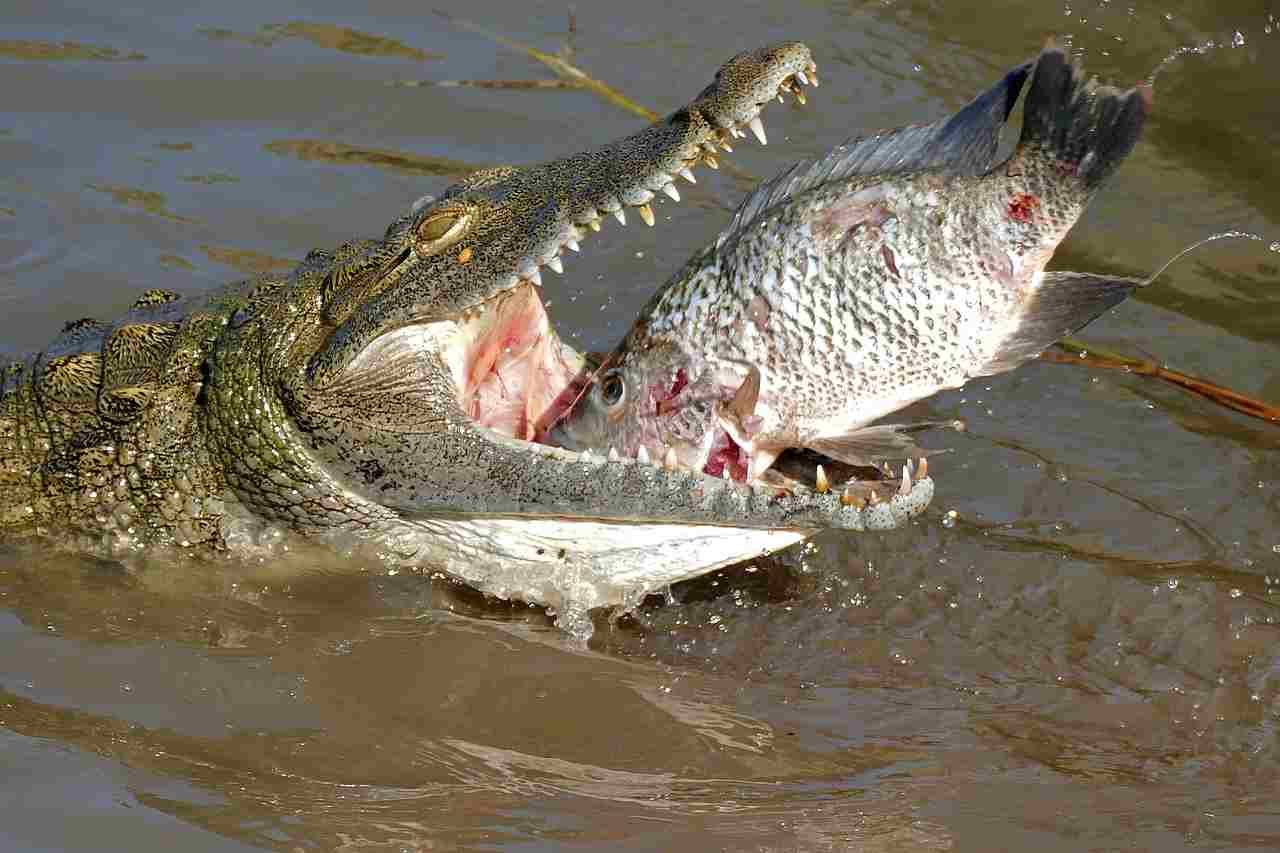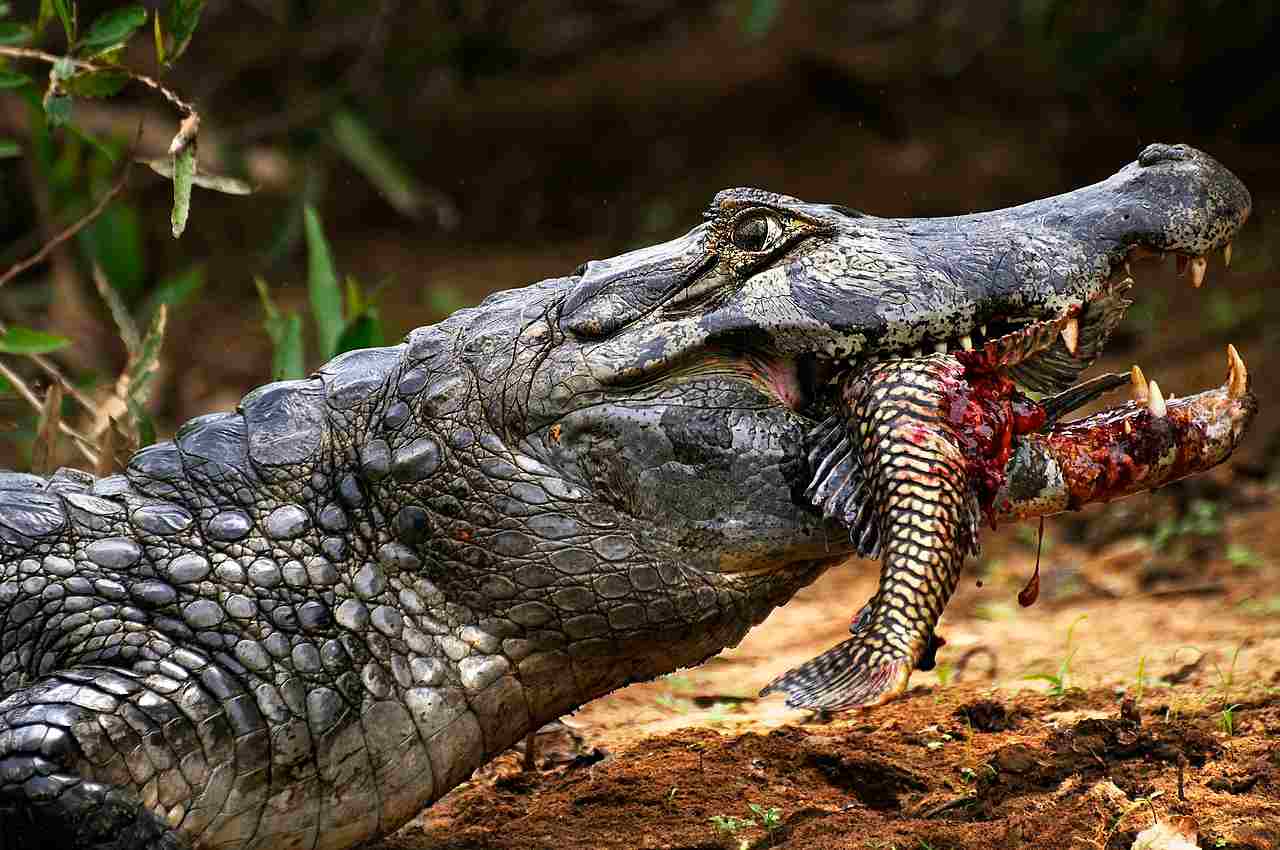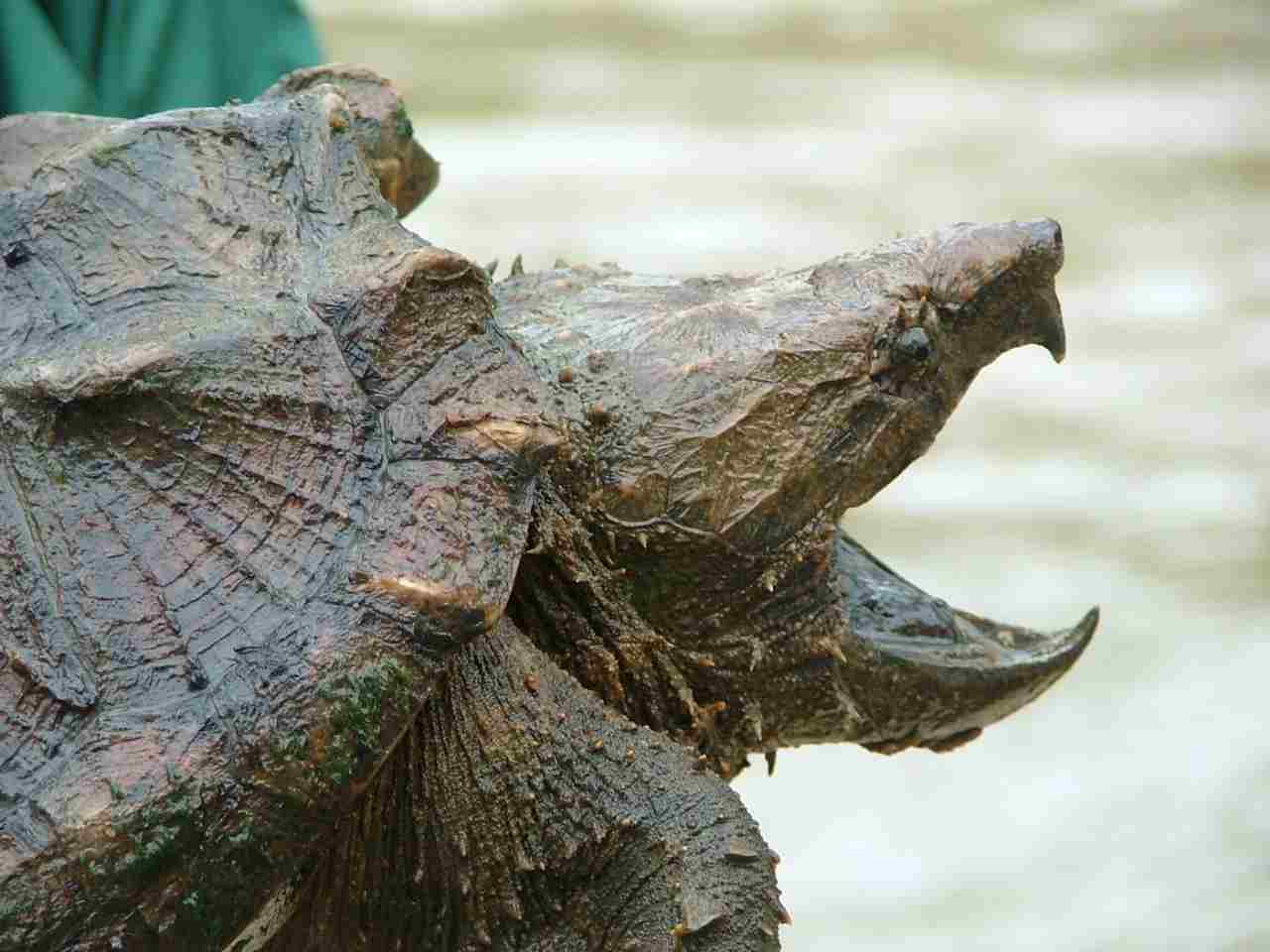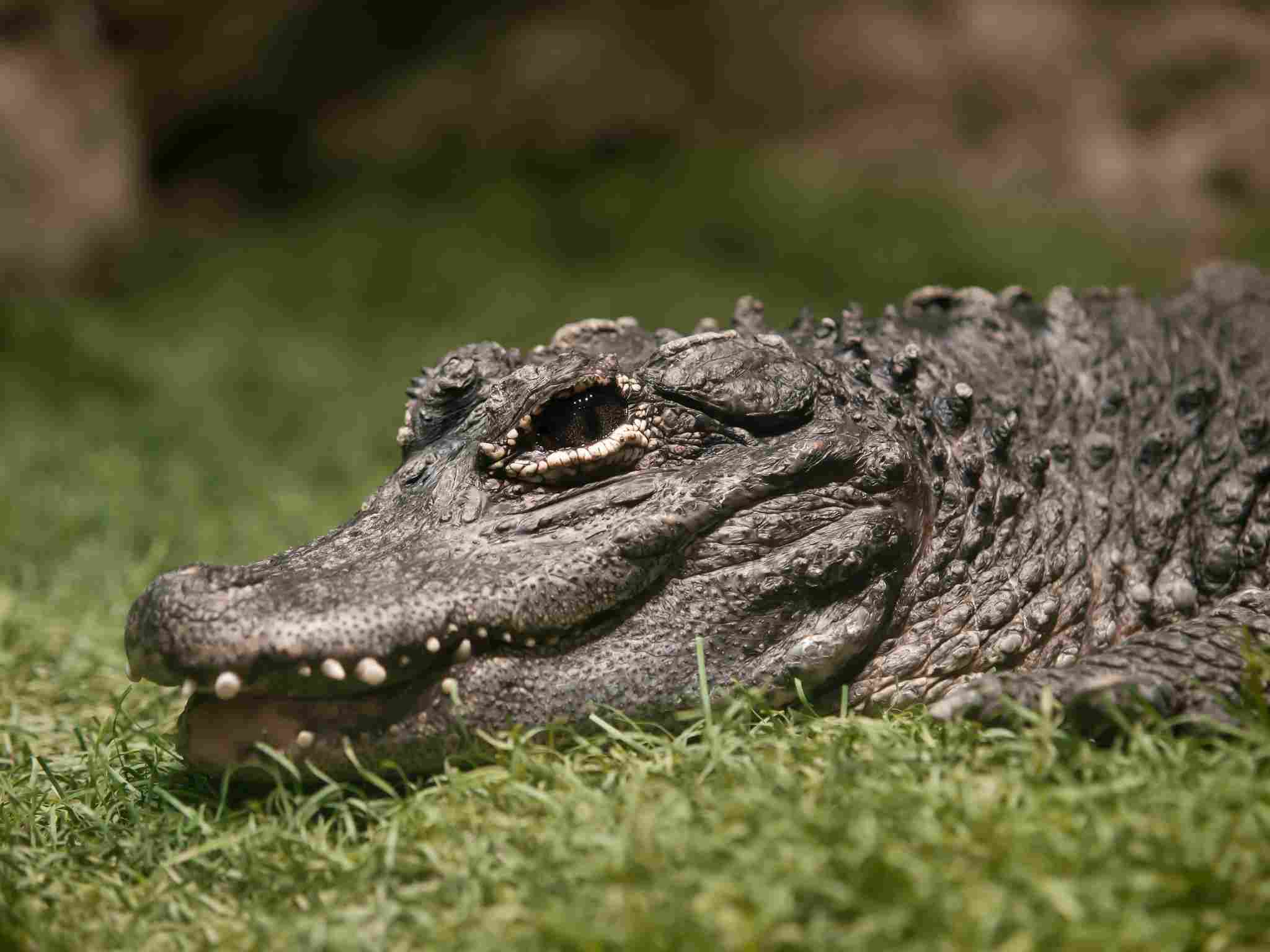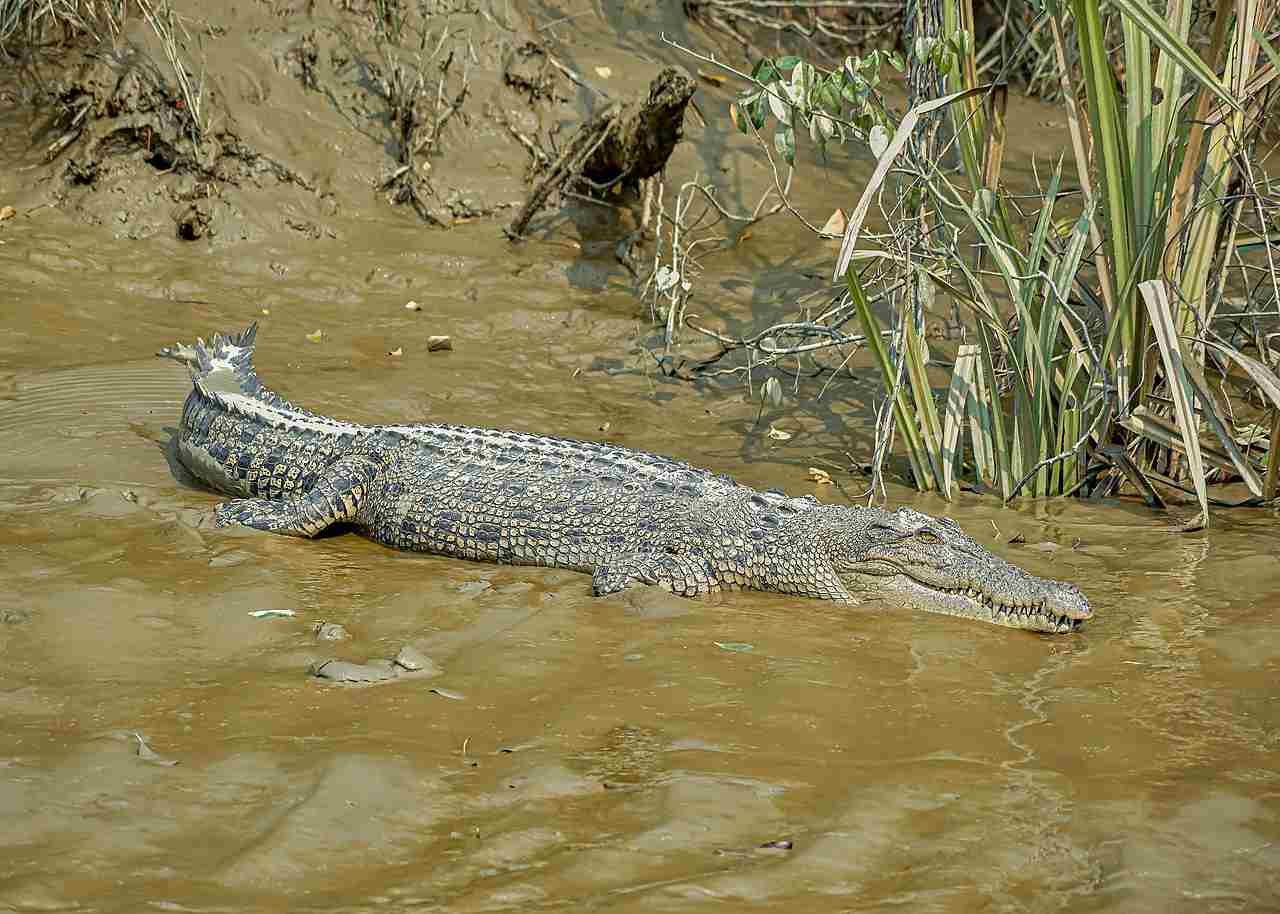Alligator Vs Crocodile Leather Price, Quality, Overall Comparison
Alligator leather is more expensive than crocodile leather, reaching up to $90 per square meter depending on the species and quality. while crocodile leather may reach $70 per square meter. The price disparity also reflects when purchasing full-skin leathers.
In the realm of exotic leather, alligator and crocodile hides are highly sought after, each offering unique characteristics that distinguish them in terms of cost, appearance, scale shape, arrangement, and best uses. This analysis aims to highlight the differences between alligator and crocodile leather, showcasing the factors that contribute to the varying value and appeal of these premium materials.
Alligator Leather vs Crocodile Leather: Assessing Differences and Distinctions
In the world of exotic leather, the distinction between alligator and crocodile hides goes beyond mere semantics. The unique qualities of each leather type influence their cost, appearance, scale characteristics, arrangement, and ideal applications.
I). Cost Disparities:
– Alligator leather tends to be more costly than crocodile leather. This price difference is influenced by factors such as the scarcity of alligators, stricter regulations governing their harvesting, and the demand for the distinct features of alligator hides.
II). Appearance:
– Alligator and crocodile leathers have subtle differences in appearance. Alligator leather often features a more symmetrical pattern, with a smoother and more uniform texture. Crocodile leather, on the other hand, may exhibit a more irregular pattern, providing a distinct aesthetic appeal.

III). Scale Shape and Arrangement:
– The shapes and arrangements of scales contribute to the unique characteristics of each leather. Alligator scales are typically square-shaped and arranged in an orderly, symmetrical pattern. Crocodile scales, in contrast, can be more rounded or oval-shaped, arranged in a less uniform fashion.
IV). Best Uses:
– Alligator leather is often preferred for luxury accessories such as handbags, wallets, and belts. Its smooth texture and symmetrical pattern lend themselves well to high-end fashion items. Crocodile leather, with its more varied pattern, is versatile and may be used for a broader range of applications, including fashion accessories, upholstery, and footwear.
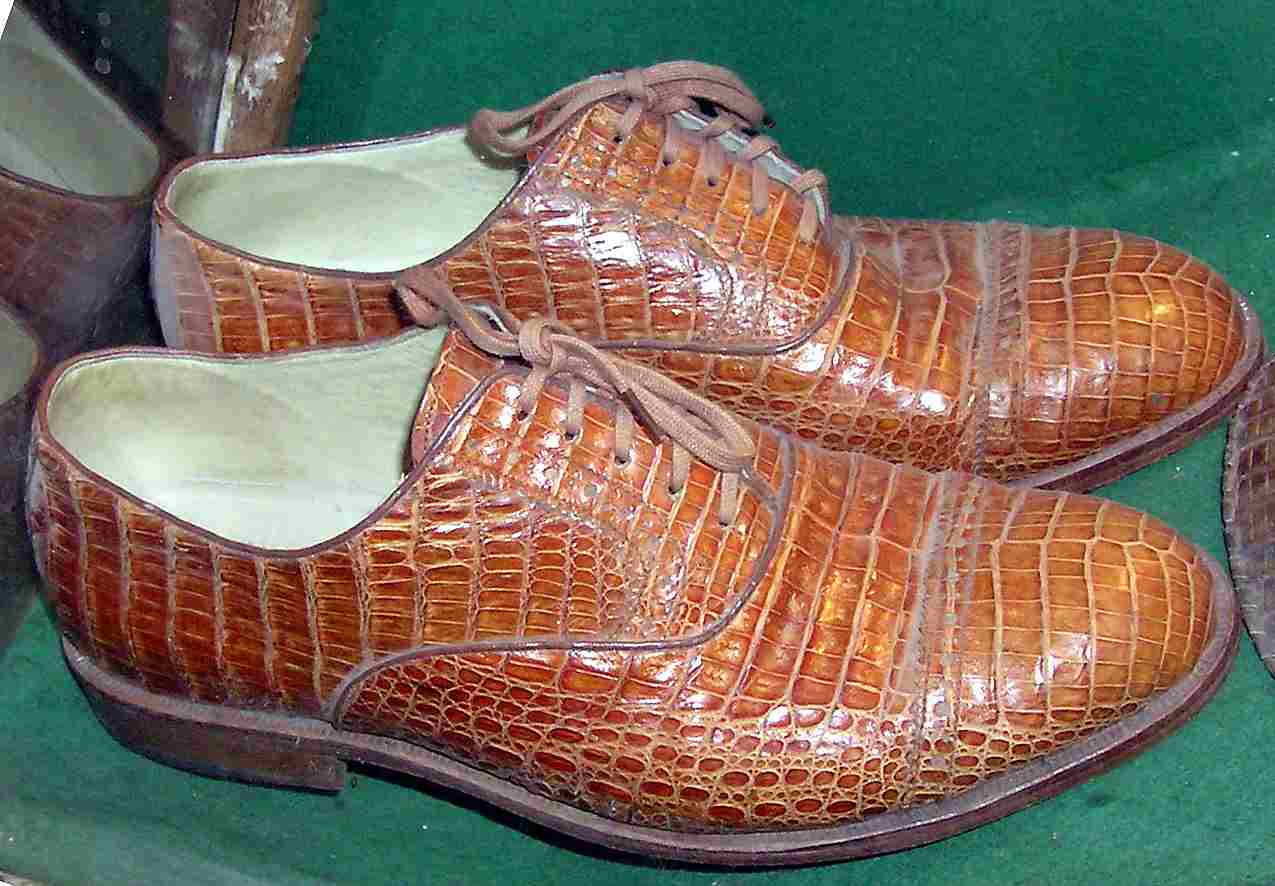
V). Overall Appeal:
– The choice between alligator and crocodile leather often comes down to personal preference and the intended use of the material. Alligator leather appeals to those seeking a sleek and polished appearance, while crocodile leather attracts individuals drawn to a more diverse and textured aesthetic.
VI). Cultural Significance:
– Both alligator and crocodile leathers have cultural significance in the fashion and luxury industries. The preference for one over the other can be influenced by regional trends, design preferences, and cultural associations.
VII). Overall Dynamics:
– In the realm of exotic leather, the distinctions between alligator and crocodile hides contribute to their unique appeal and value. While alligator leather commands a higher price for its uniformity and elegance, crocodile leather offers versatility and a distinct, textured appearance. The choice between the two depends on individual tastes, intended applications, and cultural influences within the luxury market.
*Details of Comparison
| Criteria | Alligator Leather |
Crocodile Leather
|
| Appearance
(Color, Patterns) |
Lighter shades, symmetrical pattern, defined tiles |
Darker hues, irregular pattern, larger scales
|
| Scale Size | Smaller scales, compact and refined appearance |
Larger scales, bolder and distinctive appearance
|
| Scale Arrangement or Distribution | Symmetrical and uniform arrangement |
Asymmetrical and random arrangement
|
| Durability | Robust, slightly less scratch-resistant |
Highly durable, more resistant to scratches
|
| Water Resistance | Good water resistance |
Highly water-resistant
|
| Thickness | Moderate thickness, balanced durability |
Thicker, robust and substantial feel
|
| Pattern Uniformity | High pattern uniformity |
Less uniform, more visually dynamic
|
| Overall Skin Texture | Smooth with refined texture |
Textured with a bolder appearance
|
| Quality | Premium quality, associated with luxury |
Equally esteemed for quality and exotic appeal
|
| Cost of Purchase | Generally high, reflecting exclusivity |
Can be expensive, influenced by species and quality
|
| Cost of Maintenance | Requires careful maintenance, slightly susceptible |
Regular care crucial, more resistant to scratches
|
| Ease of Handling | Relatively easy to work with due to moderate thickness |
Handling can be challenging due to larger scales
|
| Best Use(s) | Versatile for luxury accessories with sleek aesthetic |
Ideal for bold fashion items with an exotic look
|
| Relative Difficulty of Processing | Less challenging due to moderate thickness and uniform scale size |
More complex processing due to larger and irregular scales
|
| Ecological Importance | Generally environmentally friendly with regulated farming |
Conservation efforts vary, some species face challenges
|
| Textural Difference from Caiman Leather | Smoother and more refined compared to caiman leather |
More textured with larger and irregular scales
|
| Cost Difference from Caiman Leather | Generally more expensive than caiman leather |
Typically commands a higher price compared to caiman leather
|
| Reason(s) for High Value | Rarity, meticulous farming, luxurious aesthetic |
Exotic appeal, durability, and unique texture
|
| Conclusion
(Similarities and Differences) |
Both luxurious, durable, and require careful maintenance |
Alligator – refined appearance, smaller scales; Crocodile – bolder, larger scales, darker hues
|
Key Points
Similarities:
-
- Both alligator and crocodile leather are luxurious, durable, and require careful maintenance.
Differences:
-
- Alligator leather has a refined appearance with smaller, more uniform scales.
- Crocodile leather is bolder, featuring larger and irregular scales, with darker hues.
1. Appearance (Color, Patterns)
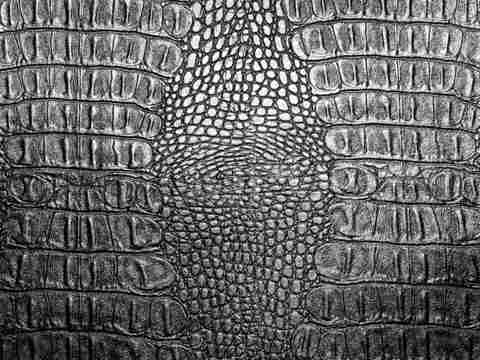
Alligator Leather:
Color: Typically lighter shades, ranging from creamy whites to light tans and browns.
Patterns: Prominent, well-defined tiles with a consistent, symmetrical arrangement. Often features occasional dark spots or markings.
Crocodile Leather:
Color: Generally darker hues, including deep browns and blacks.
Patterns: More irregular and chaotic arrangement of scales. May exhibit a rougher appearance with less symmetry compared to alligator leather.
2. Scale Size
Alligator Leather:
Details: Smaller scales compared to crocodile leather, offering a more compact and refined appearance.
Comparison: Alligator scales are generally uniform in size, providing a consistent texture across the leather.
Implications: This smaller scale size contributes to a smoother and more elegant look, suitable for luxury accessories and fashion items.
Crocodile Leather:
Details: Larger scales, providing a bold and distinctive texture to the leather.
Comparison: Crocodile scales vary in size, creating a more textured and visually dynamic surface compared to alligator leather.
Implications: The larger scale size contributes to a rugged and exotic appearance, making it suitable for bolder fashion statements.
3. Scale Arrangement/Distribution
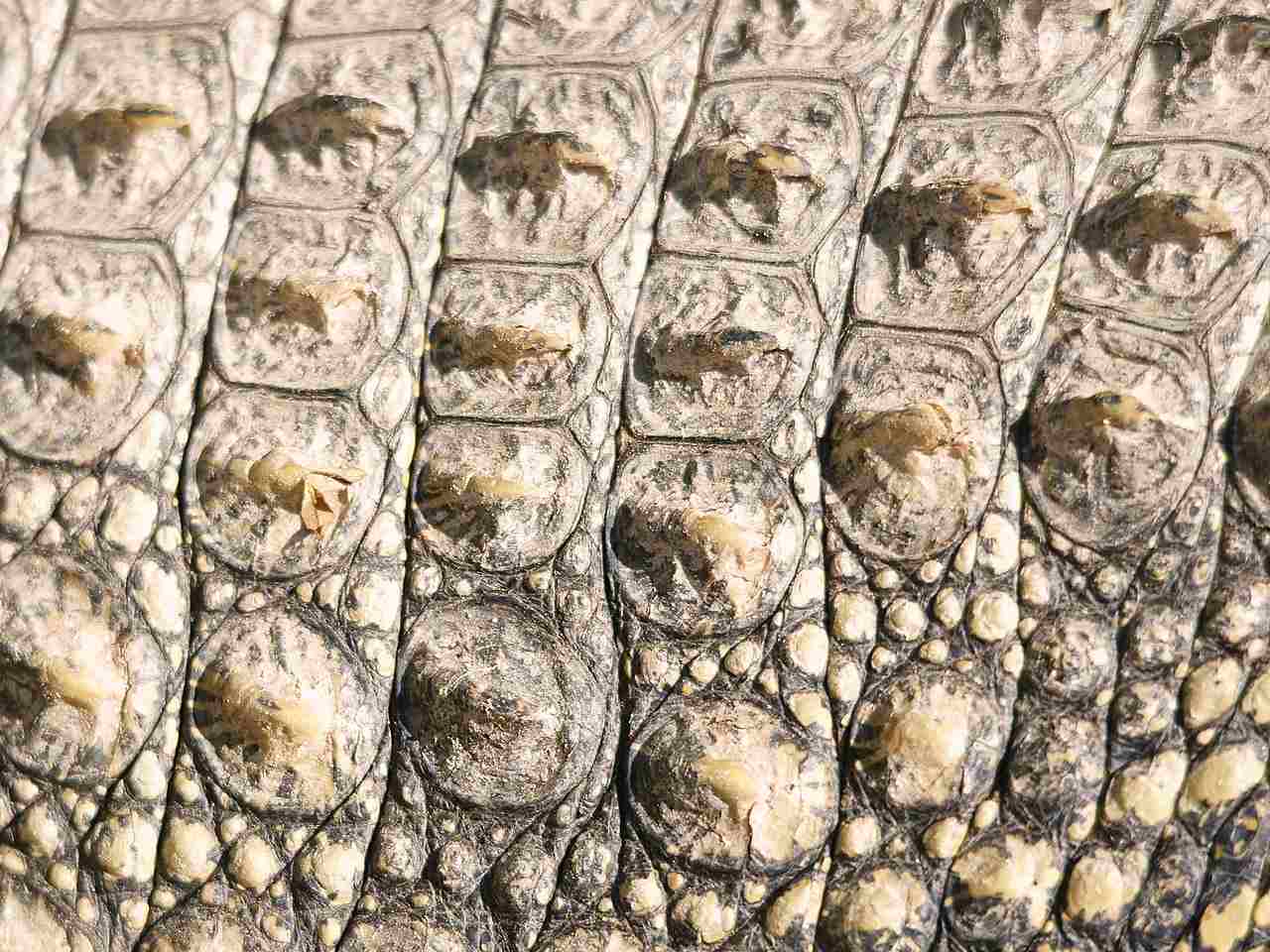
Alligator Leather:
Details: Scales are arranged in an orderly and symmetrical fashion, creating a uniform pattern.
Comparison: The arrangement is more consistent and structured compared to crocodile leather.
Implications: This organized distribution enhances the overall elegance and sophistication of alligator leather products.
Crocodile Leather:
Details: Scales are arranged in a less uniform and more random fashion, contributing to a distinctive, irregular pattern.
Comparison: The distribution of scales is more varied and asymmetrical compared to alligator leather.
Implications: The unique arrangement adds a touch of exoticism and boldness to crocodile leather items.
4. Durability
Alligator Leather:
Details: Known for its durability, alligator leather is robust and can withstand wear and tear.
Comparison: Though durable, it may be slightly less resistant to scratches compared to crocodile leather.
Implications: Well-suited for high-quality, long-lasting accessories, but may require careful handling to maintain its pristine condition.
Crocodile Leather:
Details: Renowned for its durability, crocodile leather is highly resistant to damage and wear.
Comparison: Generally more resistant to scratches compared to alligator leather.
Implications: Ideal for items that may face rougher handling or environmental exposure, ensuring a longer lifespan.
5. Water Resistance
Alligator Leather:
Details: Offers good water resistance, making it suitable for items exposed to moisture.
Comparison: Slightly less water-resistant than crocodile leather due to the smaller scale size.
Implications: Suitable for occasional exposure to water, but prolonged contact should be avoided to maintain the leather’s integrity.
Crocodile Leather:
Details: Highly water-resistant, with the larger scales providing an additional layer of protection.
Comparison: More effective in repelling water compared to alligator leather.
Implications: Well-suited for items that may encounter frequent exposure to moisture, offering enhanced protection against water damage.
6. Thickness
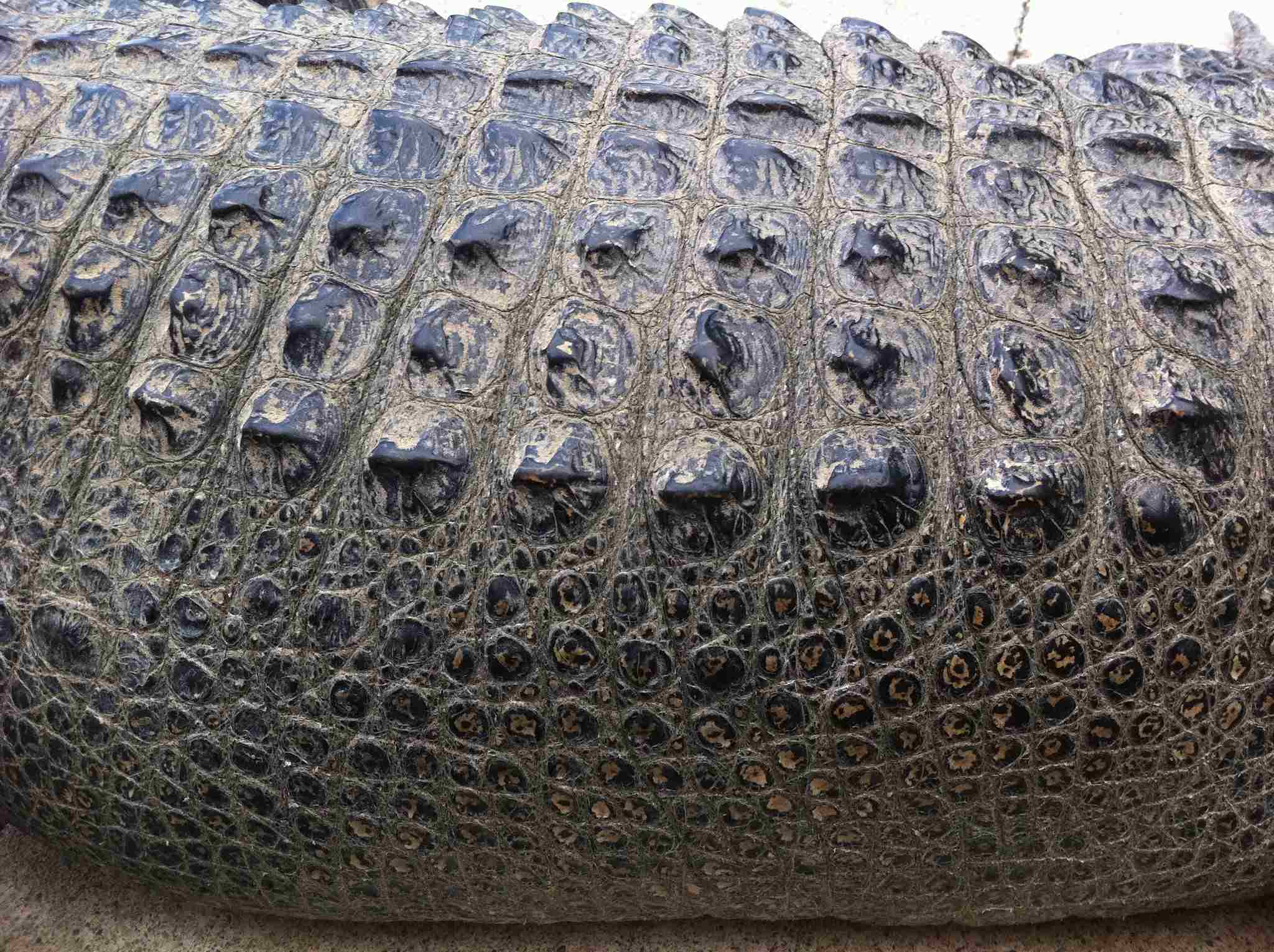
Alligator Leather:
Details: Exhibits a moderate thickness, providing a balance between durability and flexibility.
Comparison: Thicker than some other exotic leathers, but not as thick as certain reptile hides.
Implications: Offers a sturdy feel without sacrificing flexibility, suitable for various luxury accessories and fashion items.
Crocodile Leather:
Details: Tends to be thicker than alligator leather, contributing to a robust and substantial feel.
Comparison: Thicker and more substantial compared to alligator leather.
Implications: Ideal for items where a heavier and more substantial material is preferred, such as larger bags and accessories.
7. Pattern Uniformity
Alligator Leather:
Details: Displays a high level of pattern uniformity, with consistent scales across the surface.
Comparison: More uniform compared to crocodile leather.
Implications: Provides a polished and refined appearance, making it suitable for high-end fashion and accessories with a more controlled aesthetic.
Crocodile Leather:
Details: Exhibits a less uniform pattern, creating a more visually dynamic and distinctive surface.
Comparison: Less uniform compared to alligator leather.
Implications: Adds a touch of uniqueness and exoticism to products, making them stand out with a more adventurous flair.
8. Overall Skin Texture
Alligator Leather:
Details: Features a smooth yet textured surface due to the smaller, uniform scales.
Comparison: Smoother compared to crocodile leather.
Implications: Offers a refined and luxurious texture, suitable for a wide range of upscale accessories and fashion items.
Crocodile Leather:
Details: Showcases a more textured surface with larger and irregularly arranged scales.
Comparison: More textured compared to alligator leather.
Implications: The distinctive texture adds a bold and exotic touch, making it ideal for fashion items that demand a more adventurous aesthetic.
9. Quality
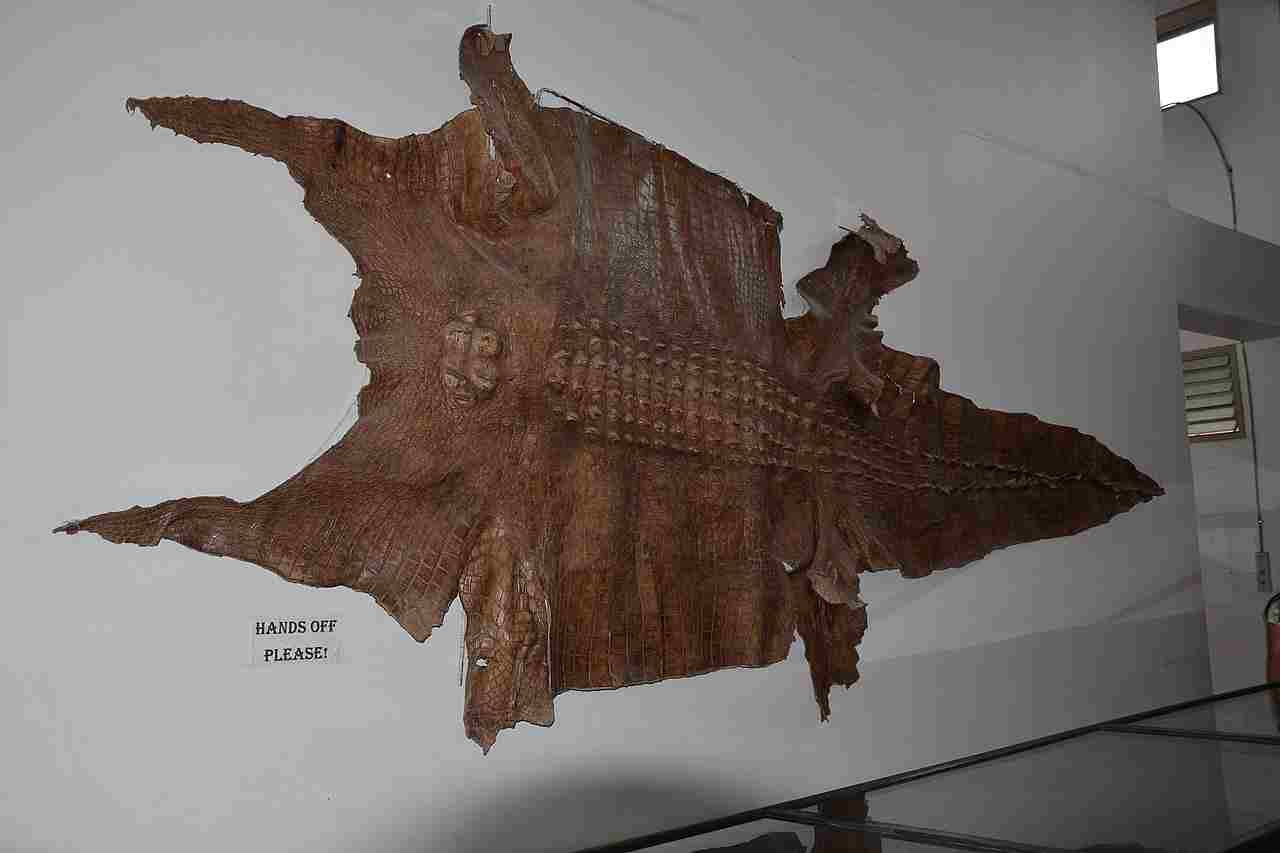
Alligator Leather:
Details: Highly regarded for its quality, alligator leather is synonymous with luxury and sophistication.
Comparison: Often considered on par with crocodile leather in terms of quality, with some preferring the refined look of alligator.
Implications: Valued for its premium quality, making it a popular choice for high-end fashion and accessories.
Crocodile Leather:
Details: Equally esteemed for its quality, crocodile leather is associated with luxury and exotic appeal.
Comparison: Highly regarded, and some individuals may prefer the bolder appearance of crocodile leather.
Implications: Valued for its durability, distinctive texture, and luxurious feel, making it a sought-after material for upscale products.
10. Cost of Purchase
Alligator Leather:
Details: Generally commands a high price due to its association with luxury and the meticulous farming practices involved. Can Reach $90 per square meter in price.
Comparison: Typically priced lower than some rare exotic leathers but considered one of the more expensive options.
Implications: The cost reflects the exclusivity and quality of the material, making it a symbol of luxury.
Crocodile Leather:
Details: Can be expensive, with the price influenced by factors such as the specific type of crocodile and the quality of the hide. Can be up to $70 per square meter in price.
Comparison: Prices may vary, and certain types of crocodile leather can be similarly priced or even more expensive than alligator leather.
Implications: The cost reflects the exotic nature and high demand for this material, contributing to its premium status.
11. Cost of Maintenance
Alligator Leather:
Details: Requires careful maintenance to preserve its appearance, including regular cleaning and conditioning.
Comparison: Maintenance needs are comparable to crocodile leather but may be slightly more susceptible to scratches.
Implications: Regular care is essential to prolong the lifespan and keep the leather looking pristine.
Crocodile Leather:
Details: Requires regular maintenance, including cleaning and conditioning, to prevent drying and cracking.
Comparison: Maintenance needs are similar to alligator leather, but it may be more resistant to scratches.
Implications: Proper care is crucial to ensure the longevity and aesthetic appeal of crocodile leather products.
12. Ease of Handling
Alligator Leather:
Details: Can be relatively easy to work with due to its moderate thickness and consistent scale size.
Comparison: Considered more manageable than some thicker and more irregular exotic leathers.
Implications: Suitable for skilled craftsmen, allowing for precise and intricate designs in various luxury items.
Crocodile Leather:
Details: Handling can be more challenging due to the larger and irregular scales, requiring expertise in leatherworking.
Comparison: May present challenges in cutting and stitching compared to alligator leather.
Implications: Requires skilled craftsmanship to harness the unique texture and ensure quality in the final product.
13. Best Use(s)
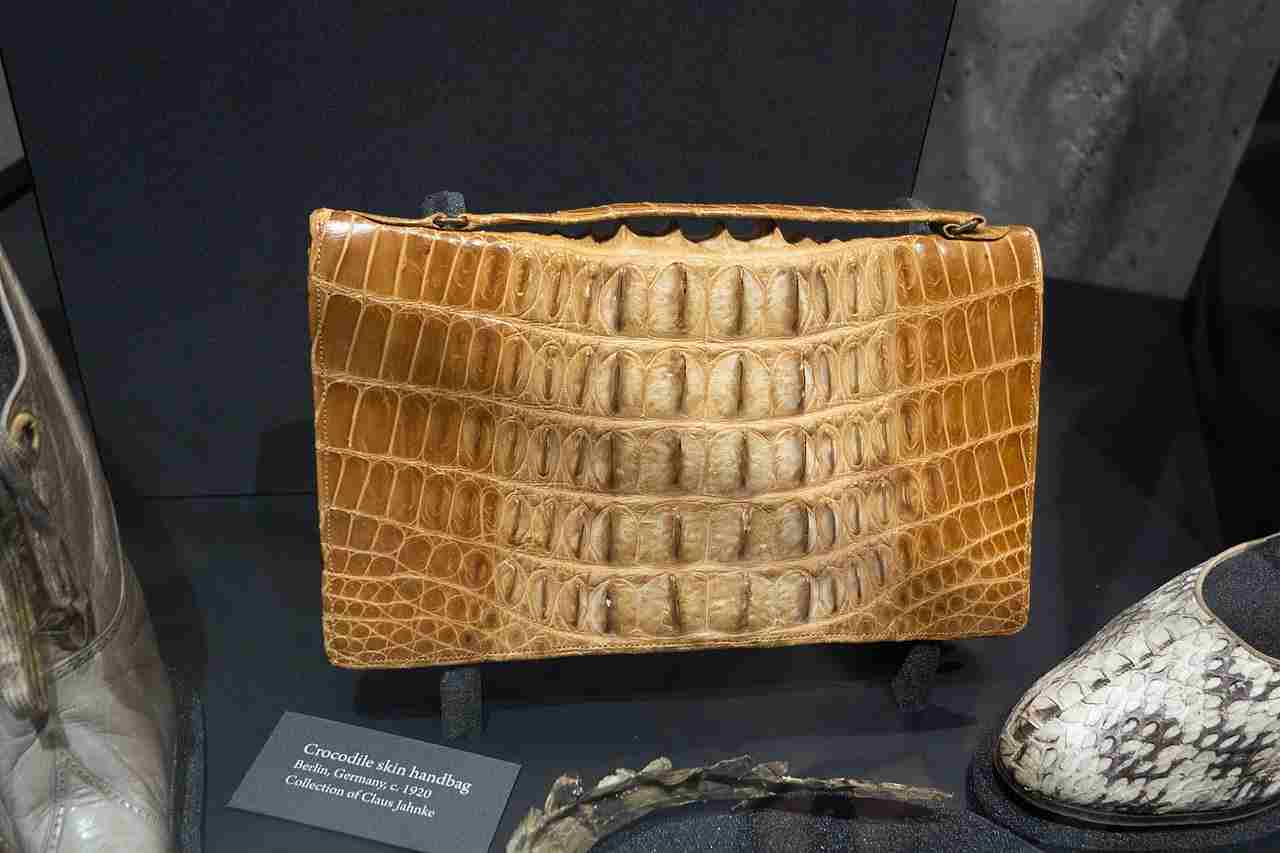
Alligator Leather:
Details: Well-suited for a wide range of luxury accessories, including wallets, belts, shoes, and small leather goods.
Comparison: Versatile in its applications, with a refined appearance suitable for more controlled and polished designs.
Implications: Ideal for items where a sleek and elegant aesthetic is desired.
Crocodile Leather:
Details: Excellently utilized in high-end fashion items, bags, and accessories that benefit from a bolder and more adventurous look.
Comparison: Known for its bold appearance, making it particularly fitting for statement pieces.
Implications: Perfect for products that aim to stand out with a more exotic and textured appeal.
14. Relative Difficulty of Processing
Alligator Leather:
Details: Generally considered less challenging to process compared to some other exotic leathers due to its moderate thickness and uniform scale size.
Comparison: Easier to work with than certain reptile hides with irregular or larger scales.
Implications: Offers a balance between unique texture and ease of processing, making it favorable for skilled craftsmen.
Crocodile Leather:
Details: Processing can be more complex due to the larger and irregular scales, requiring precision and expertise.
Comparison: Presents greater challenges in cutting and stitching compared to alligator leather.
Implications: Skilled craftsmanship is crucial to overcome processing challenges and produce high-quality end products.
15. Ecological Importance

2005, Uploaded Online 2006 (CC BY 2.0)
Alligator Leather:
Details: Farming practices are well-regulated, contributing to conservation efforts and sustainable harvesting.
Comparison: Considered relatively environmentally friendly due to successful conservation programs.
Implications: Supports responsible sourcing practices, minimizing the impact on wild populations.
Crocodile Leather:
Details: Conservation efforts vary, with some species facing challenges due to illegal hunting.
Comparison: Conservation status depends on the specific type of crocodile, with some species being more endangered.
Implications: Greater attention to ethical sourcing is crucial to ensure sustainability and protect endangered populations.
16. Textural Difference from Caiman Leather
Alligator Leather:
Details: Offers a smoother and more refined texture compared to caiman leather.
Comparison: Caiman leather tends to have a more pronounced scale texture and smaller overall scale size.
Implications: The difference in texture makes alligator leather distinct and often preferred for certain luxury applications.
Crocodile Leather:
Details: Exhibits a more textured surface compared to caiman leather, with larger and irregularly arranged scales.
Comparison: Caiman leather may have smaller, more uniform scales, resulting in a smoother texture.
Implications: The bolder texture of crocodile leather distinguishes it from caiman leather, influencing its use in high-end products.
17. Economic/Cost Difference from Caiman Leather

Alligator Leather:
Details: Generally more expensive than caiman leather due to factors like farming practices, rarity, and the luxury market demand.
Comparison: Caiman leather is often more affordable, making it a cost-effective alternative.
Implications: The higher cost of alligator leather reflects its premium status and exclusivity.
Crocodile Leather:
Details: Typically commands a higher price than caiman leather, influenced by factors like species rarity and demand in the luxury market.
Comparison: Caiman leather is usually more accessible in terms of cost.
Implications: The elevated cost of crocodile leather reflects its exotic appeal, durability, and desirability in luxury products.
18. Reason(s) for High Value
Alligator Leather:
Details: High value is attributed to its rarity, meticulous farming practices, and the luxurious aesthetic it imparts to products.
Comparison: Considered a status symbol, contributing to its premium pricing.
Implications: The combination of scarcity, quality, and demand in the luxury market elevates the value of alligator leather.
Crocodile Leather:
Details: High value is driven by factors like exotic appeal, durability, and the unique texture provided by larger and irregular scales.
Comparison: Coveted for its bold and adventurous appearance, contributing to its premium pricing.
Implications: The distinct qualities of crocodile leather, coupled with its scarcity and demand in luxury markets, result in its elevated value.
Summary of Comparison
Appearance (Color, Patterns):
Alligator Leather: Lighter shades, symmetrical pattern, well-defined tiles.
Crocodile Leather: Darker hues, irregular pattern, larger scales.
Scale Size:
Alligator Leather: Smaller scales, more compact and refined.
Crocodile Leather: Larger scales, bolder and more distinctive.
Scale Arrangement/Distribution:
Alligator Leather: Symmetrical and uniform arrangement.
Crocodile Leather: Asymmetrical and random arrangement.
Durability:
Alligator Leather: Robust, slightly less scratch-resistant.
Crocodile Leather: Highly durable, more resistant to scratches.
Water Resistance:
Alligator Leather: Good water resistance.
Crocodile Leather: Highly water-resistant.
Thickness:
Alligator Leather: Moderate thickness, balanced between durability and flexibility.
Crocodile Leather: Thicker, robust and substantial feel.
Pattern Uniformity:
Alligator Leather: High pattern uniformity.
Crocodile Leather: Less uniform, more visually dynamic.
Overall Skin Texture:
Alligator Leather: Smooth with a refined texture.
Crocodile Leather: Textured with a bolder appearance.
Quality:
Alligator Leather: Premium quality, associated with luxury.
Crocodile Leather: Equally esteemed for quality and exotic appeal.
Cost of Purchase:
Alligator Leather: Generally high, reflecting exclusivity.
Crocodile Leather: Can be expensive, influenced by species and hide quality.
Cost of Maintenance:
Alligator Leather: Requires careful maintenance, slightly susceptible to scratches.
Crocodile Leather: Regular care is crucial, more resistant to scratches.
Ease of Handling:
Alligator Leather: Relatively easy to work with due to moderate thickness.
Crocodile Leather: Handling can be challenging due to larger and irregular scales.
Best Use(s):
Alligator Leather: Versatile for luxury accessories with a sleek aesthetic.
Crocodile Leather: Ideal for bold fashion items with a more exotic and adventurous look.
Relative Difficulty of Processing:
Alligator Leather: Less challenging due to moderate thickness and uniform scale size.
Crocodile Leather: More complex processing due to larger and irregular scales.
Ecological Importance:
Alligator Leather: Generally environmentally friendly with regulated farming practices.
Crocodile Leather: Conservation efforts vary, some species face challenges.
Textural Difference from Caiman Leather:
Alligator Leather: Smoother and more refined compared to caiman leather.
Crocodile Leather: More textured with larger and irregular scales.
Economic/Cost Difference from Caiman Leather:
Alligator Leather: Generally more expensive than caiman leather.
Crocodile Leather: Typically commands a higher price compared to caiman leather.
Reason(s) for High Value:
Alligator Leather: Rarity, meticulous farming, and luxurious aesthetic.
Crocodile Leather: Exotic appeal, durability, and unique texture.
Conclusion
-Similarities:
Both alligator and crocodile leather share a reputation for luxury, durability, and a distinct reptilian texture.
Similarities in maintenance requirements underline the need for careful care to preserve the quality of both leathers.
-Differences:
Alligator leather is characterized by smaller, more uniform scales, offering a refined appearance, while crocodile leather features larger and irregular scales, providing a bolder and more exotic look.
Alligator leather tends to be lighter in color with a more symmetrical pattern, whereas crocodile leather is generally darker with a more chaotic arrangement of scales.
Processing alligator leather is generally considered less challenging than crocodile leather due to its moderate thickness and more uniform scale size.
Alligator leather is often more water-resistant than crocodile leather due to the smaller scale size.
The cost of purchase for alligator leather is typically high, while crocodile leather may vary in price depending on the specific type of crocodile and quality of the hide.
